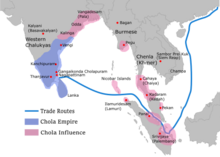This is an old revision of this page, as edited by KylieTastic (talk | contribs) at 20:15, 4 November 2015 (fix). The present address (URL) is a permanent link to this revision, which may differ significantly from the current revision.
Revision as of 20:15, 4 November 2015 by KylieTastic (talk | contribs) (fix)(diff) ← Previous revision | Latest revision (diff) | Newer revision → (diff)| This article needs additional citations for verification. Please help improve this article by adding citations to reliable sources. Unsourced material may be challenged and removed. Find sources: "Golden Age of India" – news · newspapers · books · scholar · JSTOR (December 2011) (Learn how and when to remove this message) |
| It has been suggested that this article be merged with Gupta period. (Discuss) Proposed since December 2011. |
The period between the 4th century and 6th century CE is known as the Golden Age of India because of the large achievements Indians made in the fields of science, technology, engineering, art, dialectic, literature, logic, mathematics, astronomy, religion and philosophy during the Gupta Empire. The decimal numeral system, including the concept of zero, was invented in India during this period. The peace and prosperity created under leadership of Guptas enabled the pursuit of scientific and artistic endeavors in India. The Golden Age in India came to an end when the Hunas invaded the Gupta Empire in the 6th century.
The high points of this cultural creativity are magnificent architectures, sculptures and paintings. The Gupta period produced scholars such as Kalidasa, Aryabhata, Varahamihira, Vishnu Sharma, and Vatsyayana who made great advancements in many academic fields. Science and political administration reached new heights during the Gupta era. Strong trade ties also made the region an important cultural center and set the region up as a base that would influence nearby kingdoms and regions in Burma, Sri Lanka, Malay Archipelago and Indochina.
The Golden Age of India saw achievements. Gupta made novel advances in the sciences, astronomy (Gupta philosophers proposed that the earth was not flat, but was instead round and rotated on an axis by viewing a lunar eclipses and discoveries about gravity and the planets of the solar system, which they used to tell the horoscopes), mathematics (the invention of zero, chess and decimal numeral system), literature (Panchatantra, Kama Sutra and other works), architecture (Mahabodhi Temple) and religion.
South India

South India in the 10th and 11th century CE under the imperial Cholas is considered as another Golden Age. The period saw extensive achievements in Dravidian architecture, Tamil literature, sculpture and bronze working, quasi-democratic reforms, maritime conquests and trade. The Cholas left a lasting legacy. Their patronage of Tamil literature and their zeal in building temples have resulted in some great works of Tamil literature and architecture. The Chola kings were avid builders and envisioned the temples in their kingdoms not only as places of worship but also as centres of economic activity. They pioneered a centralised form of government and established a disciplined bureaucracy.